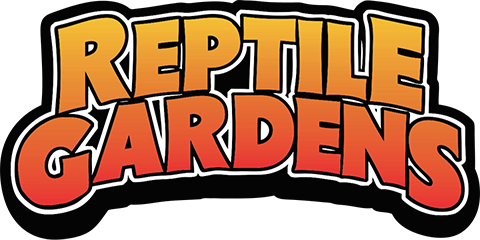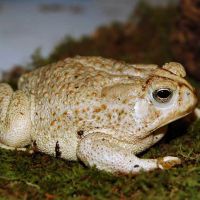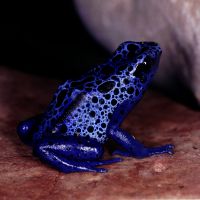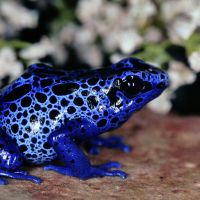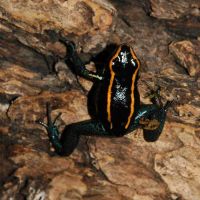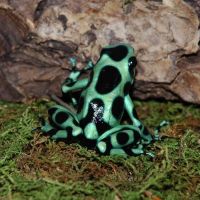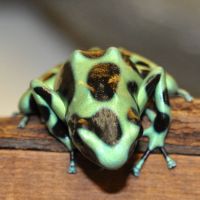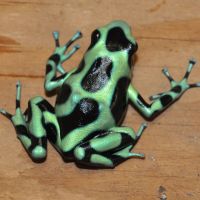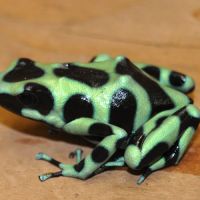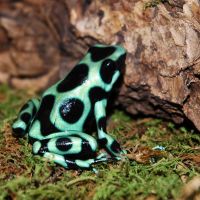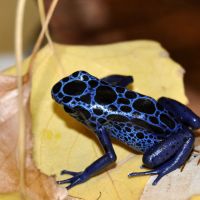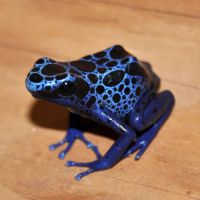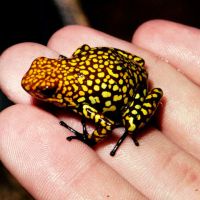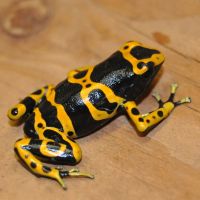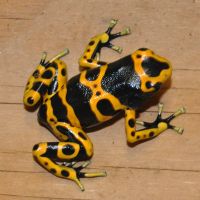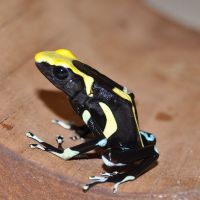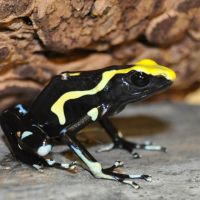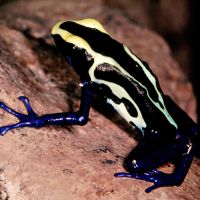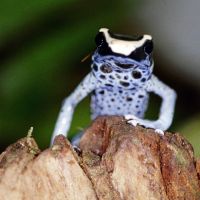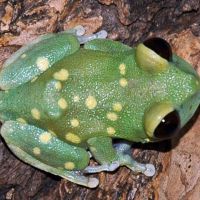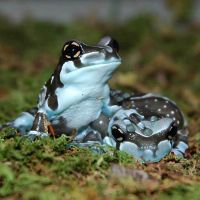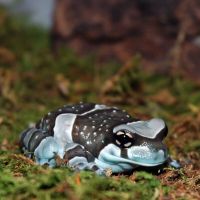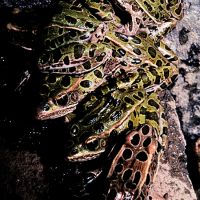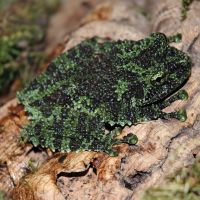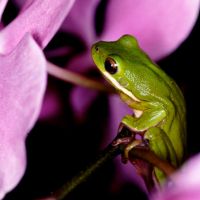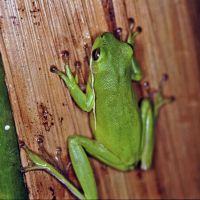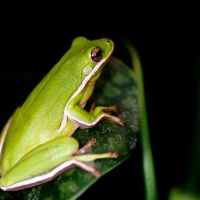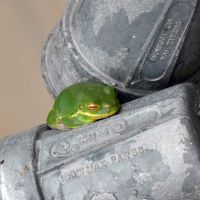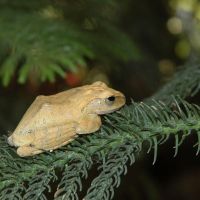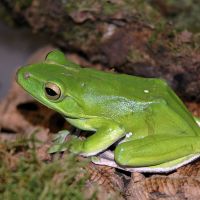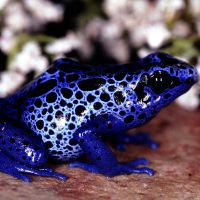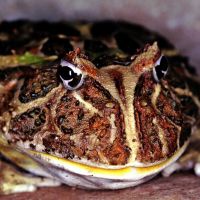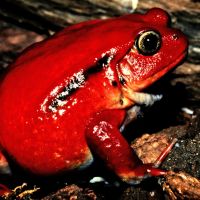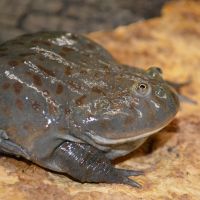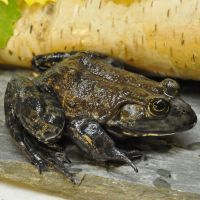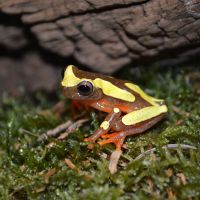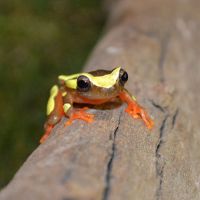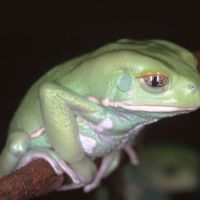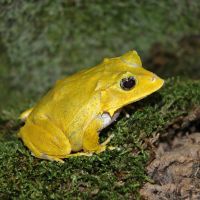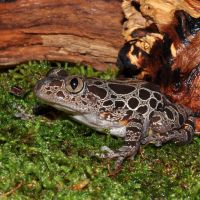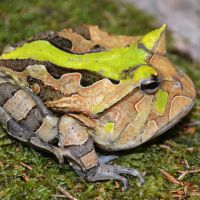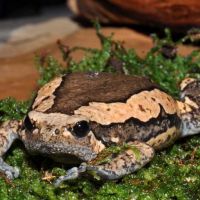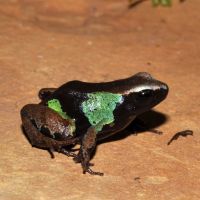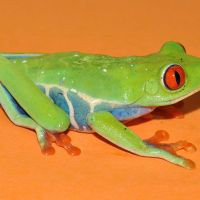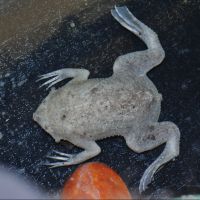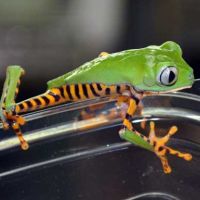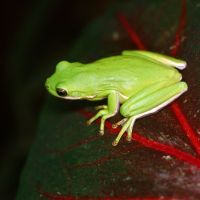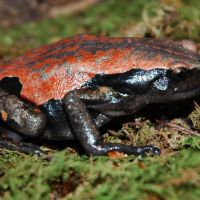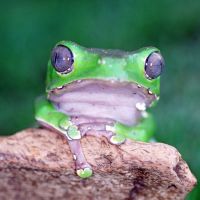Frogs
The morphology of frogs is unique among amphibians. Compared with the other amphibians, like salamanders, frogs are unusual because they lack tails as adults and their legs are used for jumping rather than walking.
Breathable Skin
Like all amphibians, oxygen can pass through the frog's highly permeable skin. This unique feature allows frogs to "breathe" through their skin. Oxygen is dissolved in a watery film on the skin and passes to the blood, so the frog's skin must remain moist at all times. Because of this, frogs are susceptible to many toxins in the environment, some of which can similarly dissolve in the layer of water and be passed into their bloodstream.
Unique adaptations
The structure of the feet and legs varies greatly among frog species, depending on whether they live primarily on the ground, in water, in trees, or in burrows. Frogs must be able to move quickly through their environment to catch prey and escape predators. Their unique adaptations, like webbed feet, toe pads, and camouflage, are their survival tools.
Some frogs even possess mild toxins, and a few, like Poison Dart Frogs, are especially toxic. The deadliest Poison Dart Frog (Phyllobates terribilis) has enough poison to kill as many as 7 humans. The arrow frog’s skin secretions are used by Amazon natives to coat the tips of their hunting and war arrows - the frogs are held over fire, which forces the toxins to the surface of the skin.
Fun Frog Facts
- Certain frogs can jump up to 20 times their own body length in a single leap.
- It is a myth that humans get warts from touching frogs and toads.
- In ancient Egypt, frogs were symbols of resurrection and were even mummified with the dead.
- A group of frogs is called an army.
- The Paradoxical Frog of South America has tadpoles up to 10 inches long, while the mature adults are only 3 inches long. They get smaller as they age!
- The Goliath Frog is the largest in the world, weighing in at up to 7 pounds.
Learn more about Poison Dart Frogs
Adult frogs
Adult frogs are characterized by long hind legs, a short body, webbed digits, protruding eyes, and the absence of a tail. Most frogs have a semi-aquatic lifestyle, but move easily on land by jumping or climbing. They typically lay their eggs in puddles, ponds or lakes, and their larvae, called tadpoles, have gills and develop in water. Adult frogs follow a carnivorous diet, mostly of arthropods, annelids and gastropods.
Frog calls
Frogs have distinct calls, which can be heard during the night or day, mainly in their mating season. The Colorado River Toad, for example, has an especially loud, piercing call, while the call of the White’s Tree Frog sounds more like singing – especially after feeding time.
Conservation Status
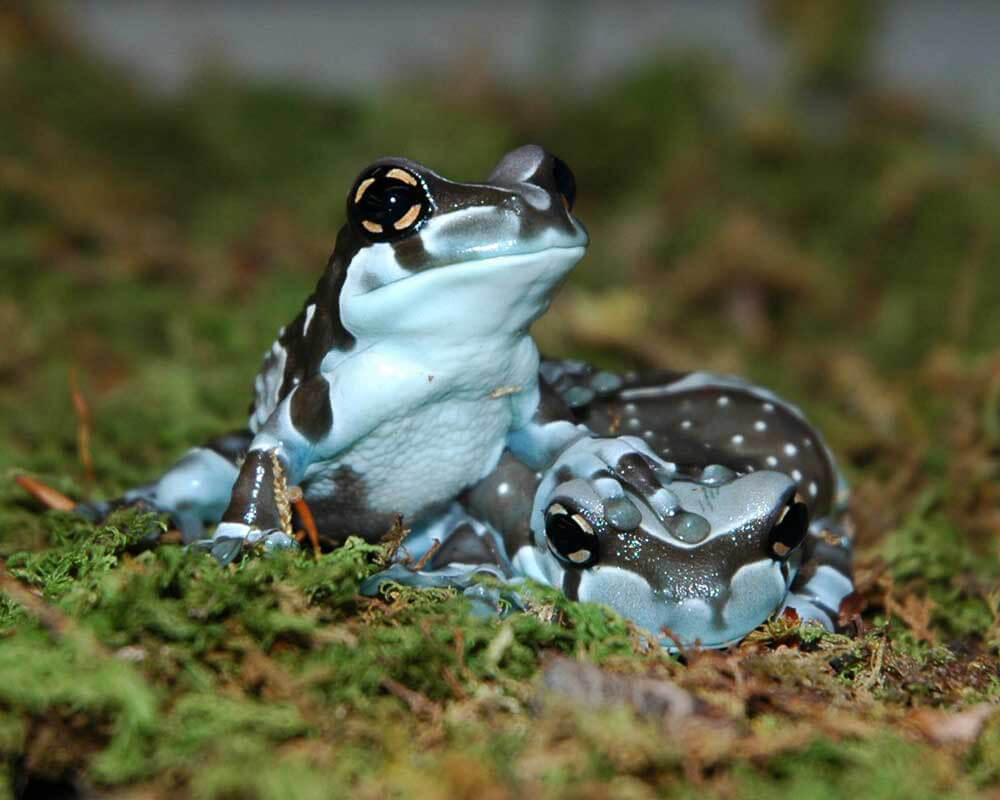
Some frog species are currently listed as endangered and a few are listed as threatened. The chytrid fungus, a deadly skin fungus has caused steep declines in frog populations across the globe. Climate change, water pollution, and habitat destruction have also been major contributors to rapid species extinction.
Reptile Gardens houses one of the largest collection of reptiles in the world! Take a tour of our Sky Dome and you might just catch a glimpse of our free-roaming frogs, turtles, birds, or friendly snakes. The lower level of the Sky Dome area includes our collection of amphibians like the brightly colored Poison Dart Frogs.
